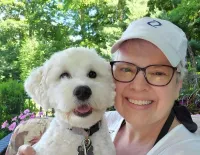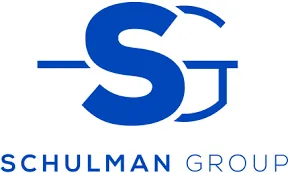
5 Ways to Reduce No-Show Rates
No-show rates are something we need to keep a watchful eye on as the impact is costly. Even low no-show rates cost businesses in lost opportunities and lost capacity.
First, we’ll discuss 5 ways to decrease your no-show rates. Then we will demonstrate the impact of the no-shows and missed appointments.
5 Ways to Decrease No-Show Rates
Remind more than once
Provide electronic calendar appointments for their calendar
Make it easy for them to contact you at any time of the day
Schedule initial appointments as soon as possible
Be on time and have a good customer relationship
1. Remind more than once
Not surprisingly, having reminders are key to reducing no-show rates. But is there a most effective way to do so?
In the American Journal of Managed Care a study published in 2018, sought to compare the no-show rates for different types of reminders being sent out.
Within the study, they used either an automated interactive voice message or text messages. Across 54,000+ patients they divided them between 3 groups. One group received reminders at both 3 days and 1 day prior to the appointment. Another group had one reminder 3 days out, and the final group had one reminder 1 day out.
The results showed that the no-show rates for those receiving TWO reminders were 24% and 17% better than those receiving only one reminder at 3 days out and 1 day out, respectively.
The key takeaway: Remind more than once!
2. Provide electronic calendar appointments for their calendar
It has been a near-universal practice to provide an appointment slip or card with the details of the next appointment. Make it one step easier…provide a “meeting invite” for the next appointment.
Many practice management systems now allow you to email an appointment card with all the details. Accepting the “meeting” means all the appointment details are accurately placed into their electronic calendar, with reminders.
This eliminates the potential error of details or a typo.
The key takeaway: Send the next appointment details as a meeting invite.
3. Make it easy for them to contact you at any time of the day
To prevent no-shows, you need to make it easy for your clientele to reach you. This means if they need to reschedule, they actually connect with you as they remember the need to make the change. At that point, you can reschedule them instead of them no-showing.
Have ways for them to text, chat, email, and call you at any time. While we all desire the appointment reminder to simply be a reminder tool, it can also be a form of communication for them to “remember” to reach out to you to reschedule. Better to find out at the 3-day or 1-day before reminder with their response than for them to forget to reach out to you and then no-show.
The key takeaway: Make it easy for them to connect to reschedule when necessary.
4. Schedule initial appointments as soon as possible
A study published in The American Journal of Medicine published in June 2010, examined no-show rates when looking at whether or not they received reminders, but also as to how long the initial appointment was set after the initial call.
The first point made was that the no-show rates for new patients are significantly higher than established patients. For this medical study, the no-show rate difference was 5%-6% higher for new patients compared to established patients. But the other component was to see the difference in the no-show rates when looking at the quartiles as to how far out the initial appointment was from the initial call. The figure to the right shows the significant no-show rate comparisons.
The key takeaway: Get them in SOON!
5. Be on time and have a good customer relationship
A key way to keep from being blown off and to reduce your no-show rates is to have a connection with your customers. A good customer relationship is based on trust and respect.
For current patients, be on time. Do what you say and follow through. By doing this, you show you value their time and the reciprocal response is they will tend to value yours.
For new patients, foster the connection from the very first call. People are shopping around and will have an easy comparison when making several calls.
Even if a “shopper” attends multiple consultations and you are not the first in the line, I want to keep you in the game. When a 1st opinion offers to start the patient the same day, I want them to pause and consider this…
”This would be ok, but if this place is this good…what must the other place be like when they were SO nice to me on the phone?”
The key takeaway: Connection (and the subsequent sale) begins with the very first phone call! Wow them there!
The Impact of No-Show Rates
This is all helpful but if we don’t understand it’s impact, it can remain on the back burner. So let’s look at the impact of no-show rates.
The Active Patient
Let’s take the example of an orthodontic office for an active patient. The industry value per visit goal for an active patient is set to $300, per Gaidge.
Assumptions:
$300 value per visit
80 scheduled appointments per patient day
5% no-show rate
16 patient days per month
With these assumptions there are 4 who do not show up…leading to $1200 in lost operations cost per day…when multiplied by the number of patient days we are up to almost $20,000 in lost operations per month that have to be rebooked for yet another day!
The New Patient
Now let’s look at the orthodontic office for an initial exam appointment where there is NO skin in the game, as the consultations are at no cost. What is at stake here? No-show rates for new patients are not uncommon to be 15% (with a range of 10-25% observed).
The assumptions here are:
$6000 production per full treatment
1040 scheduled new patients per year (based on Gaidge showing that in the USA, and average of 885 kept new patient exams)
15% no-show rate
65% ready for treatment
65% accept treatment
The results are eye-popping. Put all that together and you get 156 not showing up over the course of a year, and by the time you get to those ready for treatment and those who, statistically, would have said “yes” to you…you are talking about another 66 starts…or almost another $400,000 in lost production!
Think about it…especially on those new patient no-show rates, they had enough interest to reach out to you but not enough interest to show up.
Summary of reducing no-show rates
In summary, decreasing no-show rates should be on our radars. They are very costly to our operational costs as well as to overall production. Studies have provided us validation on the need for reminders as well as tips on how to provide effective reminders. And technology has made it easier for us to help our patients have all the correct information.
But the reality is, the best thing we can do to prevent poor no-show rates is to have great customer service and outstanding customer relationships.
I leave you with the results of one last study. A 2016 Vanguard study showed the impact of customer service on patient experience.
They showed:
96% of patient complaints are customer service related
4% are healthcare-related
And of those complaints…53% of complaints are related to communication.
What are you doing to foster good communication and outstanding customer experience?
I’d love to speak with you about how training and coaching can empower you and your team to stand out from the crowd!
Filter my blogs by Category by clicking the relevant button below:
Preferred Provider For:
As a bonus for being a member of these organizations you will receive a discount on my services.
Schulman Group leaders say
“The Schulman Group is pleased to call Amy Demas/Communicate Excellence one of our valued preferred consultants and a huge advocate for our educational programming efforts. Her "can do" attitude has served the group in many capacities over the years…..as a consultant, as a program speaker and most recently served as moderator for our Doctor and Team Meeting. As speaker and consultant, Amy offers invaluable insight on communication skills for all orthodontic team members and has helped a number of our members streamline and improve office interactions with patients.”
Emily, Mari's List says
"Amy Demas is a shining star when it comes to training front desk staff, scheduling coordinators and treatment coordinators. She truly communicates excellence. Mari's List feels confident endorsing Amy because of her long history of exceptional professionalism and glowing reviews from our members."





